We read and then eat a rare edition of the Hokkaido Shimbun newspaper made out of kelp
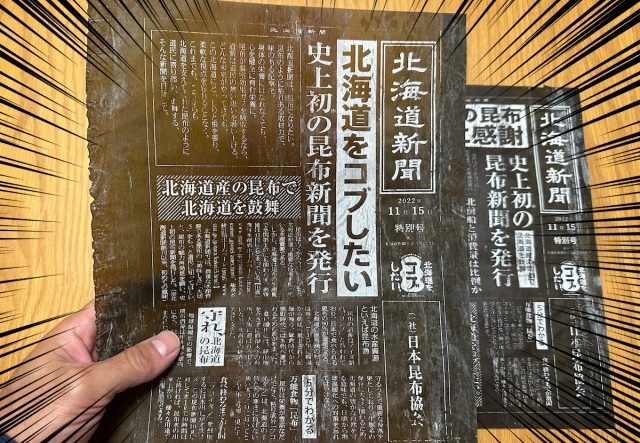
Extra! Extra! Eat all about it!
In the northern reaches of Japan lies the large island prefecture of Hokkaido. Although famous for many things such as its great food, natural scenery, and roads, it doesn’t get nearly the respect it deserves as Japan’s leading producer of the kelp variety known as kombu.
This is something local newspaper Hokkaido Shimbun is hoping to rectify by raising awareness through projects such as their annual Hokkaido Kombu Shimbun. This special issue of Hokkaido Shimbun made entirely of kombu and printed with edible ink is released each year on Kombu Day, 15 November.
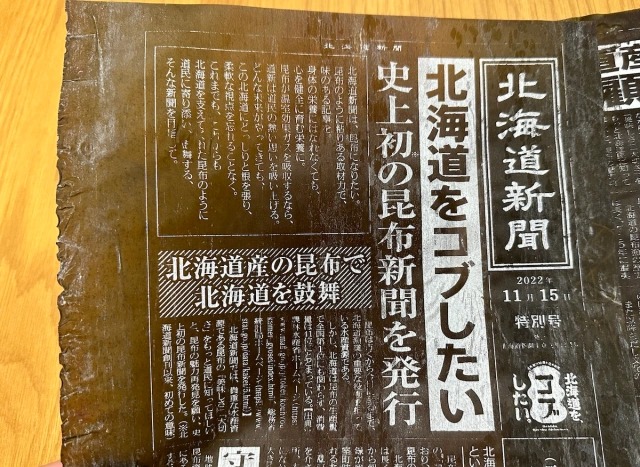
Lack of kombu awareness in Hokkaido is a major problem. Even though the prefecture is the number-one producer of this kelp, consumption there ranks 41st out of Japan’s 47 prefectures. However, the Hokkaido Kombu Shimbun has proven to be a major catalyst in turning people on to the algae. It sells out almost instantly every year with its limited run of 100 copies and is considered so rare that some people choose to preserve it rather than eat it.
Our writer Masanuki Sunakoma was one of the lucky few who was able to get copies of both the local and national editions of Hokkaido Kombu Shimbun this year.
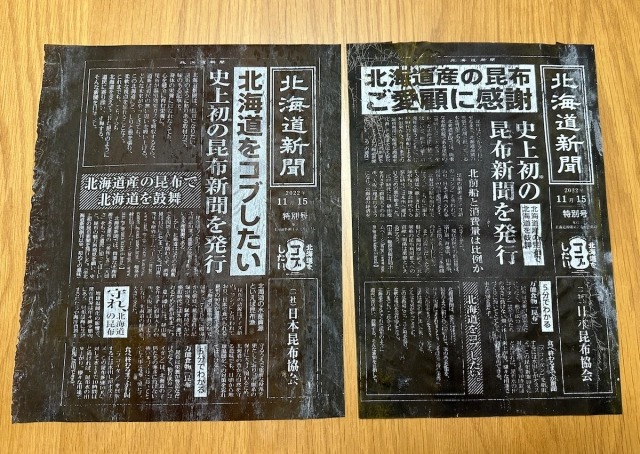
First, Masanuki sat down at his table and read through the kelp news. It had a lot of interesting information about kombu, such as the word “kombu” having been derived from the language of the indigenous Ainu people of Hokkaido as well as the stats about production and consumption mentioned above.
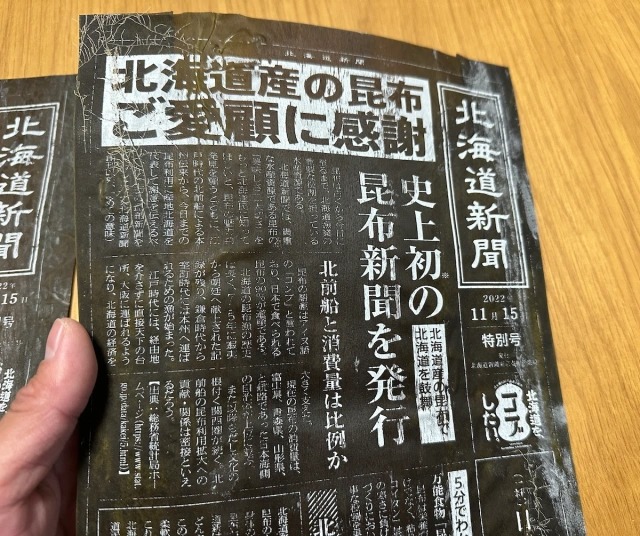
Once he finished reading, our reporter then proceeded to eat his newspaper – or “newskelp” rather. Like the kombu sold in supermarkets, it was dried and very hard but as it is some of the finest kombu produced in Japan it was extremely flavorful and aromatic.
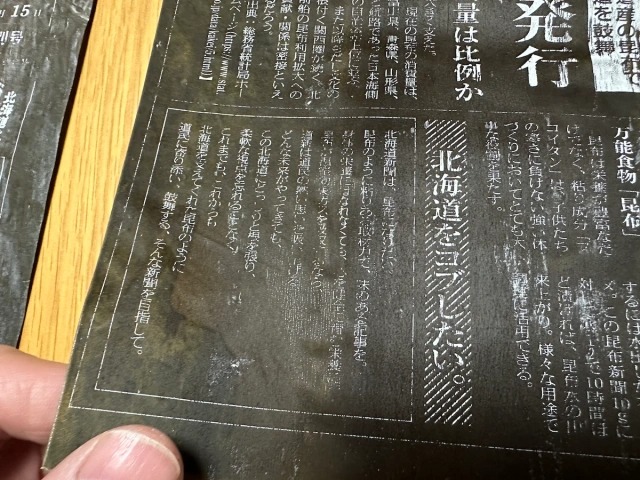
Hokkaido Shimbun recommends soaking the news in one liter (34 ounces) of water for 10 hours. Readers can then use the stock for cooking, soups, or just drinking straight. Masanuki, however, decided to take just half a sheet and simmer it for 30 minutes in the same amount of water.

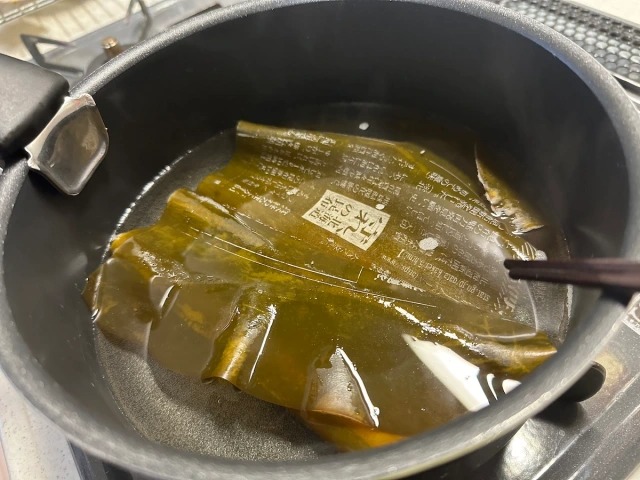
By removing the news just before it rose to a boil, he was able to get an umami-rich broth.
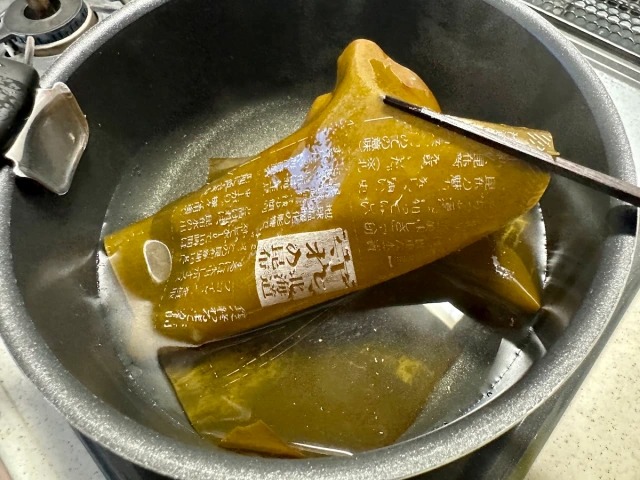
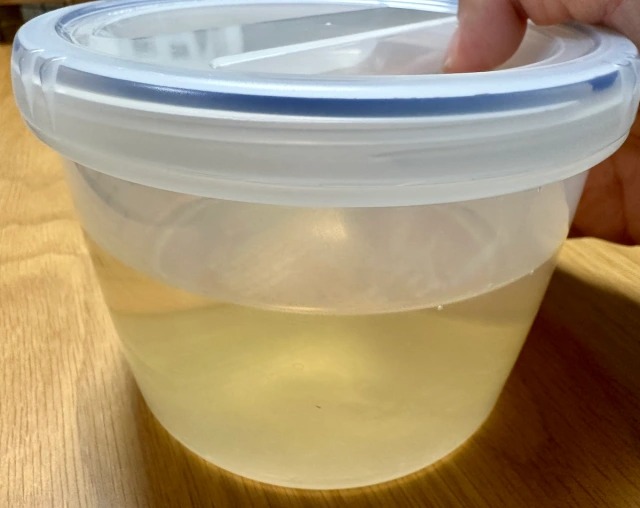
As both an excellent source of news and dietary fiber, Masanuki was very satisfied with the Hokkaido Kombu Shimbun. It also had the added benefit of making him feel like a spy for eating his information.

He wonders if edible news isn’t something that could catch on. Baked goods with current events printed on them would be great for commutes and the blank seaweed around rice balls seems like a huge waste of print space.
Photos ©SoraNews24
● Want to hear about SoraNews24’s latest articles as soon as they’re published? Follow us on Facebook and Twitter!
Credit:

0 comments:
Post a Comment